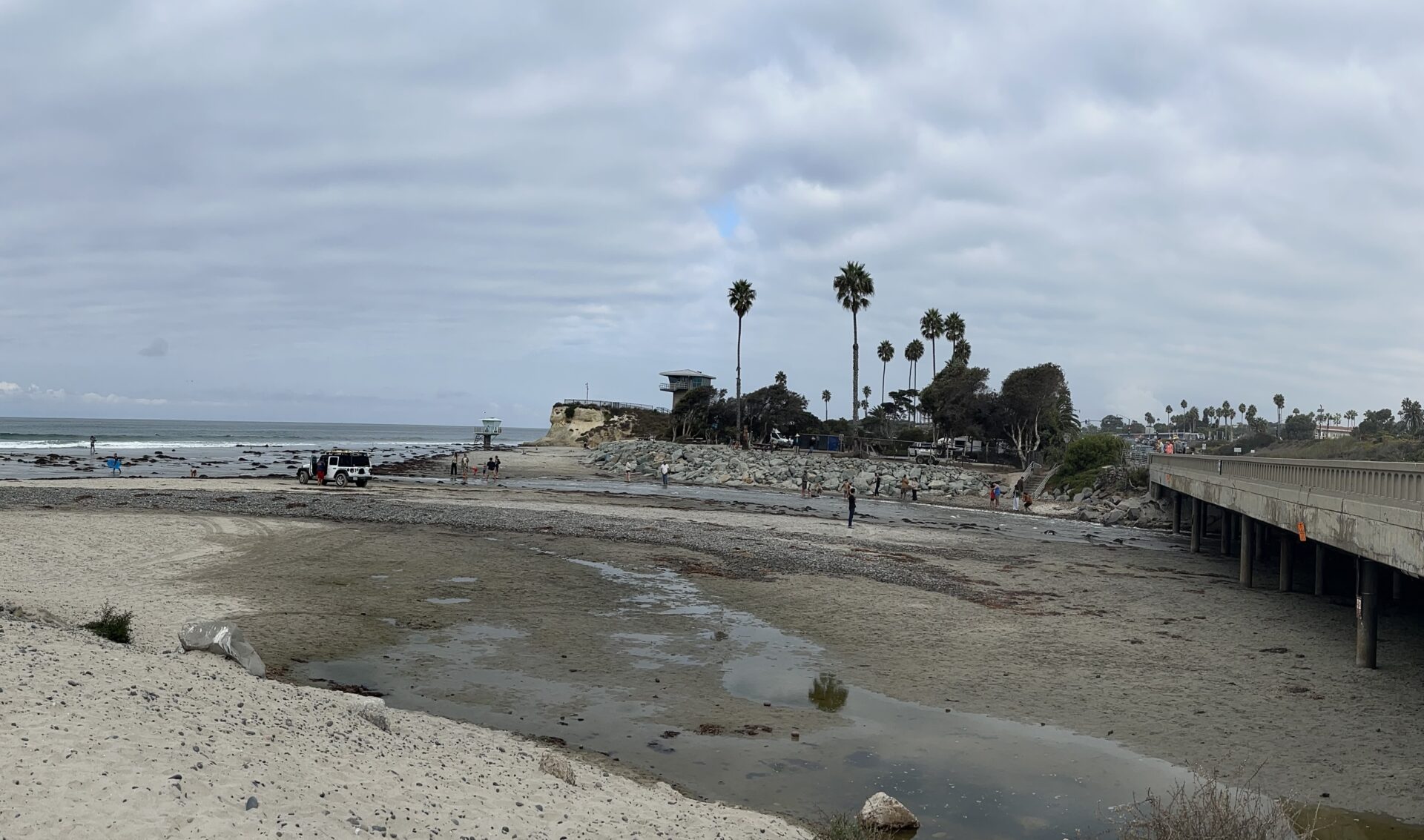San Elijo Lagoon Inlet Facing Possible Closure
Follow ( 0 Followers ) X Follow E-mail : * Follow Unfollow

Nature Collective, with 37 years of service in protecting the San Elijo Lagoon ecosystem, is presently addressing the challenge of sand accumulation in the lagoon’s main channel and inlet.
Although we have been effective in removing sand from the inlet since 1999 via land-based excavation, the current situation demands a more robust approach. Hence, we are planning an aquatic dredge project to tackle this issue.
Throughout the year, our concerns about the lagoon’s condition have been shared (blog posts: January, March, July, and September) and the need for an aquatic dredging solution has been emphasized.
We recently identified Pacific Dredge and Construction LLC as the best fit for the project and have held discussions with our San Elijo Lagoon Restoration project partners to strategize funding. We have also submitted an adaptive management proposal to SANDAG, which is currently under review. We anticipate proposal approval within three weeks. In preparation for the project’s initiation, we are procuring all necessary permits.
We are also in talks with Pacific Dredge and Construction LLC and consulting firm Moffatt & Nichol to estimate the project timeline and logistics. The dredge operation should take 8-10 weeks and will begin before the end of the year. The project will involve aquatic dredging east of the Highway 101 bridge. The aquatic dredge project will be followed by a land-based excavation west of Highway 101, this is anticipated to take less than one week.
With the arrival of autumn, we are experiencing the anticipated high tides. The high tides have led to tidal water temporarily overtopping the sand accumulation, allowing a small amount of water to seep into the lagoon channels. This phenomenon triggers fish to follow the tidal flow towards the ocean, a regular natural event. However, the tide’s strength is insufficient to transport the fish to the Pacific, resulting in them getting stranded in the shallow waters of the lagoon inlet at Cardiff State Beach.
Nature Collective will be present at Cardiff State Beach during the upcoming high tide cycle, equipped with marine nets to assist fish and other marine life in reaching the ocean or the lagoon. Our Marine Protected Area ambassadors will also be there to educate the public about our interventions, the reasons behind the sand accumulation, and the measures we are taking to address it.
Moreover, the lagoon is experiencing flooding due to the water that entered it and is unable to leave because of the sand accumulation. While temporary flooding from high tides is natural, prolonged flooding can potentially affect the cord grass habitat, home to the Ridgway’s Rail.
We are working diligently to restore tidal flow and plan to commence work as soon as possible.
Stay tuned for more updates coming soon.
Your donation is invaluable in enabling us to expedite this process and to provide support to wildlife.
Follow ( 0 Followers ) X Follow E-mail : * Follow Unfollow
Follow ( 0 Followers ) X Follow E-mail : * Follow Unfollow